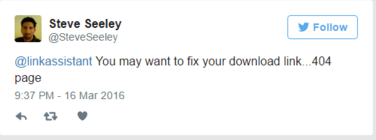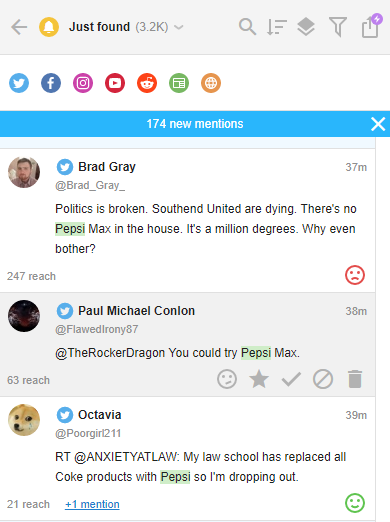How to make word-of-mouth work for you using social media

Let’s talk business exposure. There are many ways, and you know them all: TV ads, online ads, print copies, radio ads (if you live in the 1980s) and so on. But there is a way my marketer friend calls OMTA (One Mother Told Another). And it’s a better way.
In marketing, it’s called word-of-mouth. I am, too, pretty surprised they haven't come up with something more trendy. Word-of-mouth describes a form of business exposure when your happy clients go and tell their friends about your business.

It’s free. It’s more trustworthy. It’s also uncontrollable, you might think. Well, not exactly. Otherwise, marketers wouldn’t add ‘management’ to its name. True, sometimes people talk about you just because your products are top. Or because there are no alternatives to your products. But even in this case, you might still want to enhance word-of-mouth: the more - the better. And if word-of-mouth isn’t currently a major influence on your sales, let’s change it.
Starting now. Almost. Let me cite Forbes first.
In 2014 they published an article that called for an introduction of a new marketing strategy aimed at working with social media. It was based on 3 E’s: Engage, Equip, Empower. Now I just automatically recall how in school we were taught 4 F’s of evolutionary biology: “fighting, fleeing, feeding, and mating", but that’s probably just me.
Back to social media marketing, the main idea of 3 E’s is to connect with customers and influence the almighty word-of-mouth. Let’s start.
Engage:
In short, engagement means constant communication in real time. You should always be there for your customers no matter what their deal is. To find out what your customers say and never miss any channel of communication, we’ll set up an alert for your brand in Awario.
- Click the + button to set up an alert.

- Insert your main keywords: the name of your brand/company or your products, services, branches you want to monitor. If the name of your brand is a common word, make sure to filter out irrelevant mentions using ‘negative keywords’. Add a link to your website. Often people who are especially kind post links when they talk about brands in their blogs.

- And finally, don’t forget to refine your alert soon. Because people are unpredictable. They won’t call you by your full brand name. They’ll come up with abbreviations, nicknames, they’ll misspell it so often you’ll forget your original spelling.

So once you get your first mentions don’t forget to look up common words, nicknames, and misspellings and add them as keywords. And finally - what are we going to do with all this information?
1. Reply ASAP to complaints.

I can’t stress enough how much people complain online. As much as ⅓ of 16 to 24 year-olds will post online if they are unhappy with the service they receive. Which is understandable. Сalling is often seen as a personal hell for young people. How should you respond?
- FAST.
Research shows that quick ineffective replies are perceived by customers as being better than slow but effective replies. Yes, it’s irrational. Deal with it - people are.
- Take responsibility.
Don’t delete complaints. There is this print screen option people use more often than you think. Apologize, and explain what will you do to fix the problem.
- Make it personal.
Don’t be the "your call is very important to us" company. Interact.

This got more attention than O2 could hope for by just doing their job. Remember you get the opportunity to resolve the issue publicly. Especially, if it’s something like this: 
How great is it to reply within minutes that you have solved the problem? The best marketing you can think of.
2. Thank your customers for their tweet/post, comment on their blog, etc.

Always, always thank your customers for every kind word they have shared on their blog, tweet, etc. They took time to do it, it’s only fair that you respond! 
Probably don’t comment with 'Aww' and 'xo' if you are Harley-Davidson. Although I’m not sure. Moving on.
Equip:
Equip your customers with reasons to talk about your brand. Reasons like what? To answer this question, look at the feedback Awario shows you.
1. React to your customers’ feedback.
In your observation of Awario’s feedback, you’ll discover frequently asked questions, common complaints and pain points of your customers. Build your social strategy using this knowledge.
- Post answers to FAQs and best solutions to common problems.

- Post useful tips and advice.
See what I did there ;) But I genuinely believe providing your customers with relevant information can’t go wrong.

2. React to your customers’ interests.
- Post content of common interest.

For example, if you are a dark spiky clothes brand you might want to post about rock and metal gigs in your city (this is totally not based on personal experience ;)
- Ask questions that interest your customers.
Look at your data and ask yourself what your customers will be glad to share. If that’s about your product you might be interested to know the answer as well! 
If your questions are totally unrelated, you’ll build associations between things they care about and your brand.

3. Look at your competitors for inspiration.
I don’t have to tell you that it’s useful to know what your competitors are doing. Let’s instead discuss how to monitor your competitors and the ideas for social media marketing that you can borrow from them. How to monitor:
- Create an alert for your competitor: the process is absolutely the same as for creating alert for your own brand: add the name of your competitor’s brand, company, CEO as keywords and filter out common words using ‘negative keywords’ option if necessary. Add a link to their website.
- Go to Alert Comparison, and see the Share of Voice metrics; compare your locations, languages, sources, news coverage, sentiment topic cloud, etc.
 Share of Voice metrics in Awario
Share of Voice metrics in Awario - If your competitor started a campaign across all social media channels and you want to know how successful it becomes, set up a specific alert for it. You can use the campaign's name as a keyword or its URL.
- Look through the feed to get a more detailed view of the kind of mentions your competitor gets.

Look up content ideas that went viral.
The number of mentions will tell you which content went viral or at least became very successful. Use that to come up with your own campaigns. For example, now we know that best gum commercials feature love stories that make you cry (or make me cry, whatever). 
19 million views!
- Look up contest ideas.
Contests attract crowds, especially the ones that are fun. It’s pretty hard to come up with an original idea of a contest but it doesn’t mean you should avoid doing them. 
- Find out if any of your competitors has created a tricky referral program.
Empower:
And, finally, empower. An excellent way to make your customers true advocates of your brand is to make them feel like they have the power to change it.
- Let your customers suggest ideas.

Don’t forget to comment on their ideas to show that you are closely following!
- Let them vote for your new logo or some small business matters.
- Give them something before you give it to everyone else. Like Taco Bell.

That’s it, I am out of the word-of-mouth information for now and ready to move on to social selling and market research and influencers and other great things social media offers. Yeah, I’ll keep talking until you know everything. And if you still don’t have an Awario’s account click here to create one to start engaging, equipping and empowering.
By signing up I agree to the Terms of Use and Privacy Policy













